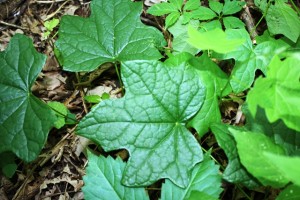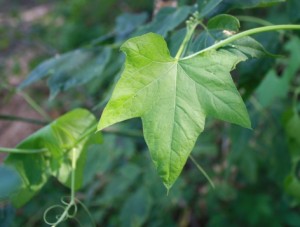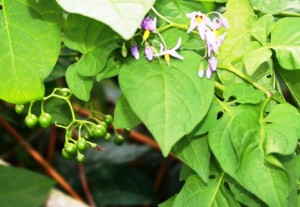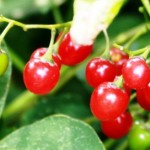Recently, I was able to find and photograph more vining woodland plants. The plants listed below are not “woody” vines but may still provide you with a rewarding experience if you can find and identify these species in your woodland. All are native to our area with the exception of bittersweet nightshade. Don’t confuse the name bittersweet nightshade with our native American bittersweet, a beautiful woody vine that I hope to share with you in the future during its autumn bloom time. Here we go:
Moonseed (Menispermum canadense) is without tendrils but can still climb from 6 – 20’. Its 3-lobed leaves are about 4 – 6” across. Moonseed is found in moist, rich woodland habitats and in my experience not as common as most other vines. I was told its seeds resemble a crescent moon shape thus the name.
Wild Cucumber (Echinocystis lobata) is an annual native plant that will grow up to 7’ in length. At first glance, wild cucumber looks very similar to moonseed. To identify wild cucumber, look for 5-lobed leaves and tendrils. The dried fruits are in the shape of a 2” cucumber and the lacy interior of the fruit resembles a sea sponge. This plant typically grows in moist woodland locations.
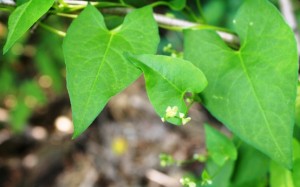 Buckwheat (Polygonum scandens) also known as climbing false buckwheat was a bugger for me to ID correctly. After long assuming it was an invasive type of bindweed, a coworker suggested it was buckwheat. I hit my plant books to prove that I was correct. (No ego problems here!) My embarrassment in being wrong was quickly replaced by relief – one less invasive plant to remove during woodland habitat restoration. Eureka!
Buckwheat (Polygonum scandens) also known as climbing false buckwheat was a bugger for me to ID correctly. After long assuming it was an invasive type of bindweed, a coworker suggested it was buckwheat. I hit my plant books to prove that I was correct. (No ego problems here!) My embarrassment in being wrong was quickly replaced by relief – one less invasive plant to remove during woodland habitat restoration. Eureka!Non-native Bittersweet nightshade (Solanum dulcamara) is an invasive plant that can get out of control quickly if we don’t remove the berries it produces. One client commented that it kept returning even though she pulled out, by the roots, all the mature plants she found. Mystery solved when she realized the berries she left on the pulled plants generously reseeded a new crop every year. Bag or burn the berries unless you wish to continue chasing your nightshade, er tail.
Do you have a mystery plant that you can’t identify? Send a photo and let our blog readers and I assist.


